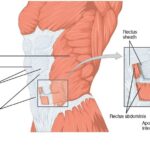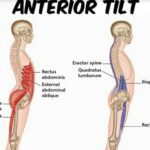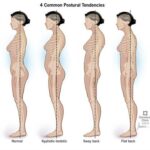Physical activity causes muscle breakdown, energy depletion and loss of fluid. The aches and pains that you experience after physical activity are associated with microscopic muscle damage that occurs after every workout, initiating a mild inflammatory response.
What is inflammation?
Inflammation is the body’s natural immediate response to tissue damage caused by physical trauma. Its purpose is to prepare the damaged area for healing.
Post-workout Inflammation
After your first workout, the inflammatory response increases the activity of neutrophils (first responder inflammatory cells) that protect muscle fibers from excessive damage. The post-exercise inflammation that you experience after each workout is gradually increasing your resistance to muscle damage – even after your very first workout. The gradual build up of resistance sets a solid platform for which to increase endurance and performance as you progress with your training.
Stages of inflammation
Acute (1-3 days)
After injury, chemicals are immediately released by injured cells, causing discomfort and pain in the injured area. An influx of fluid leads to swelling, and vasodilation and increased blood flow causes heat and redness to consume the area. Pain and swelling restrict movement of the injured area in order to isolate the damage. During the acute stage, the administering the RICE treatment (rest, ice, compression, elevation) significantly reduces recovery time and promotes a stable foundation for further healing.
Sub-acute (2-3 weeks)
Also called the proliferative stage, cells accumulate and work to clean-up the damaged area, making space for new tissues. Tissue regeneration is stimulated and new capillaries and tissue fibers are formed. Massage is strongly encouraged during this stage; it is much more efficient to treat an injury before improper healing has begun.
Post-acute
The post-acute stage is when the new muscle fibers mature –the newly formed collagen fibers continue to strengthen and become dense. In this stage, muscle tissue will remodel itself according to the force applied to it – returning to regular movement is essential in order to regain muscle mass and ROM.
Chronic Inflammation (21+ days)
Chronic inflammation occurs after an unsuccessful inflammation process. The invasive irritant has not been removed, the immune system continues to attack, and musculoskeletal structures never regain full function.
Management and Prevention
Allow your body to recover: recovery allows the body to work to repair muscle tissue, restore energy and rehydrate. Incorporating a recovery period into your training routine is a great way to manage post-workout inflammation, resulting in an enhanced performance for your next training session or event.
Pace yourself: doing too much too quickly increases your chances of injury – you’ll make better progress if you take caution when increasing your training level. At the other end of the spectrum, once you adapt to a given resistance, you need increase your training load in order to progress.
Get a good night’s sleep: sleep deprivation can lead to increased changes in cortisol levels (relating to stress) and decreased production of the human growth hormone (relating to muscle recovery, affecting tissue repair), and limits aerobic endurance.
Correct management of your post-exercise inflammation enables you to recover faster, better avoid injury, enhance your endurance and perform better.
References
- A Massage Therapists Guide to Pathology, Ruth Werner, LMP, NCTMB, 5th Edition, publication date: Mar 1, 2012Is Inflammation Holding You Back?
- Matt Fitzgerald, Active.com, http://www.active.com/running/Articles/Is_inflammation_holding_you_back
- Inflammation & Tissue Healing, http://www.sportsinjuryclinic.net/sport-injuries/general/inflammation
- Rest and Recovery After Exercise – Improve Sports Performance, Elizabeth Quinn, About.com Guid, http://sportsmedicine.about.com/od/sampleworkouts/a/RestandRecovery.htm
- Training and Recovery: Get Your Questions Answered, By: Christopher D. Jensen, PhD, MPH, RD, http://www.powerbar.com/articles/509/recovery-get-your-questions-answered.aspx
This article and/or video are for educational purposes only; do not attempt without your physician’s clearance. If you are in pain or injured, see your physician.
Copyright © Vidal Sports LLC 2018






